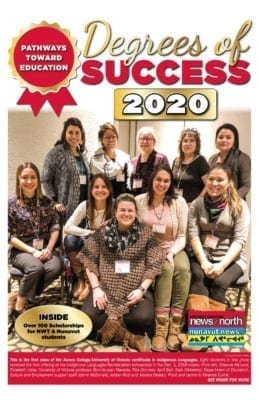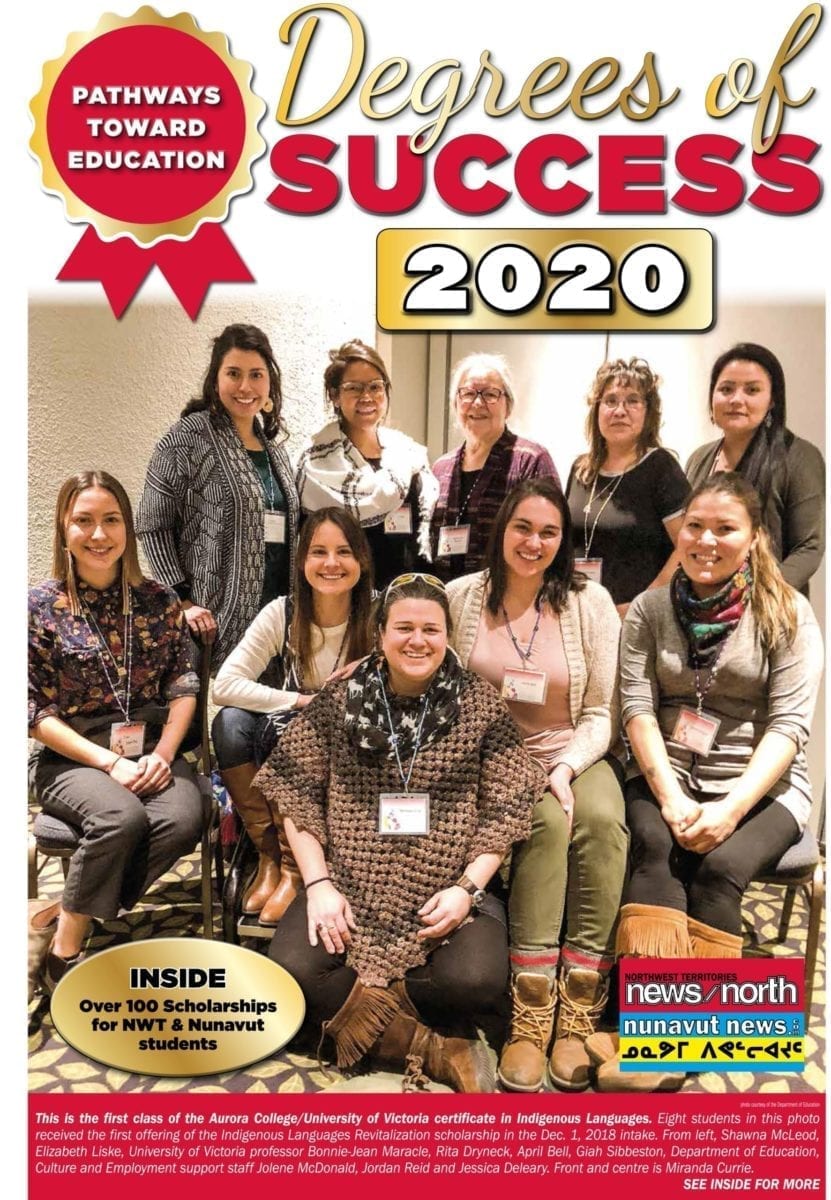Attendance has been in decline in many Nunavut schools for the past several years and there's no clear answer as to what can be done to reverse course.

Illnesses, mental health issues, the fallout from suicide, bullying, alcohol and drugs, overcrowded and noisy homes and cold weather are among the numerous issues that hinder attendance, according to Education Minister David Joanasie.
Trina Sallerina, principal of Qiqirtaq Ilihakvik in Gjoa Haven, sees bullying as a major deterrent for some students, and it's often beyond the control of teachers.
“Specifically, cyberbullying is a problem because most of it occurs outside of school hours. I have had many parents contact me and tell me that their son or daughter will not come to school because they are scared of those who bullied them online from the night before,” Sallerina stated. “Some students do not want to come to school because they fear telling who is doing the bullying will lead to more problems. I have spoken to parents who want their children in school but they can't convince them to come.”
For Arviat North-Whale Cove MLA John Main, attendance is at the heart of improving Nunavut's performance in education.
“If I could change one thing about education in Nunavut, it would be to get every single school-aged child in the door on a regular basis. If we could find a way to do that, the picture, I believe, would change dramatically in terms of our success and in terms of our economy, eventually,” he said.

photo courtesy of the Department of Education
The question as to why attendance lags in Nunavut is a “deep one,” Main conceded. He said he believes the relationship between teachers and parents still needs to improve.
“Ideally it should be a relationship where they get to know each other and there's some comfort there,” he said.
At Kugluktuk High School, principal Rohan Hollingsworth has taken it upon himself to look into matters when students are absent for three consecutive days.
“As a principal, I have decided, when and where possible, to do personal home visits. I have reached out to the elementary school's counsellor to help if my ilinniarvimmi inuusilirijiit (school counsellor) is not available,” said Hollingsworth.
Strategies to broaden appeal
There are myriad ways that teachers are attempting to make school more appealing to young Nunavummiut. Educators are doing more to as recognize Inuit Qaujimajatuqangit (traditional knowledge), celebrating regular attenders, increasing extracurricular activities, hosting meals and aiming to make schools more fun, among other initiatives.
Arviligruaq Illiniarvik in Kugaaruk hosts on-the-land trips with elders, taking students fishing and seal hunting. Qiqirtaq Ilihakvik offers animal skin preparation and sewing lessons from elders.
Cultural lessons and shop classes tend to specifically help high-risk boys who have low attendance rates, according to Sallerina.
Incentives to bring students into class include recognition ceremonies for those with attendance rates above 80 per cent. At Qiqirtaq, those with perfect attendance can choose from rewards that include hats, power cords, scarves and binders. At Jimmy Hikok Ilihakvik in Kugluktuk, students in grades 4 to 6 can earn points for high attendance and good behaviour. Those points can be redeemed for prizes. At neighbouring Kugluktuk High School, students' names are entered into a draw for electronic devices, even if they're not showing up every day.
“I make sure students understand that they should be striving for perfect attendance, but I also want to ensure that we recognize those who, through various difficulties, still try be at school on a regular basis,” said Hollingsworth.
Another approach is adding more extracurricular activities at school. At Jimmy Hikok Ilihakvik, soccer, science club, newspaper club, art club, the grizzly cubs group, drum dancing, sewing, music club, yoga club and homework club are enticements to bring students into school.
Jimmy Hikok Ilihakvik also has a wellness program that offers breakfast, lunches and snacks daily to approximately 120 students.
“The wellness program promotes a culture of learning for both students and parents because they are assured that if a student comes to school hungry, there will always be food,” said principal John Power.
Having a full complement of staff is also an influence, according to Dale Skinner, principal of Kiilinik High School in Cambridge Bay.
“This means, currently, every student spends six hours daily engaged in focused activity. Students have commented that it is way more fun being at school – even though it is work sometimes – than staying home and watching TV,” Skinner stated. “The high schools have become more rigourous and students are enjoying being challenged more. Since we have become fully staffed, I do not hear my students say, 'I’m bored,' because there is no time to be bored.”
In the legislative assembly last November, Main suggested offering money as an incentive to get children to class more regularly. He said that tactic, although controversial, has been used effectively in other North American jurisdictions and would be worth consideration in Nunavut.
“I think we can agree the status quo is not working,” Main said.
Fact file
Nunavut school attendance in decline
2013-14 – 77.3 per cent
2014-15 – 70.9 per cent
2015-16 – 70.4 per cent
2016-17 – 68.2 per cent
2017-18 – 66.3 per cent
By region in 2017-18
Kivalliq – 69.7 per cent
Kitikmeot – 65.1 per cent
Qikiqtani – 64.4 per cent
Source: Department of Education

